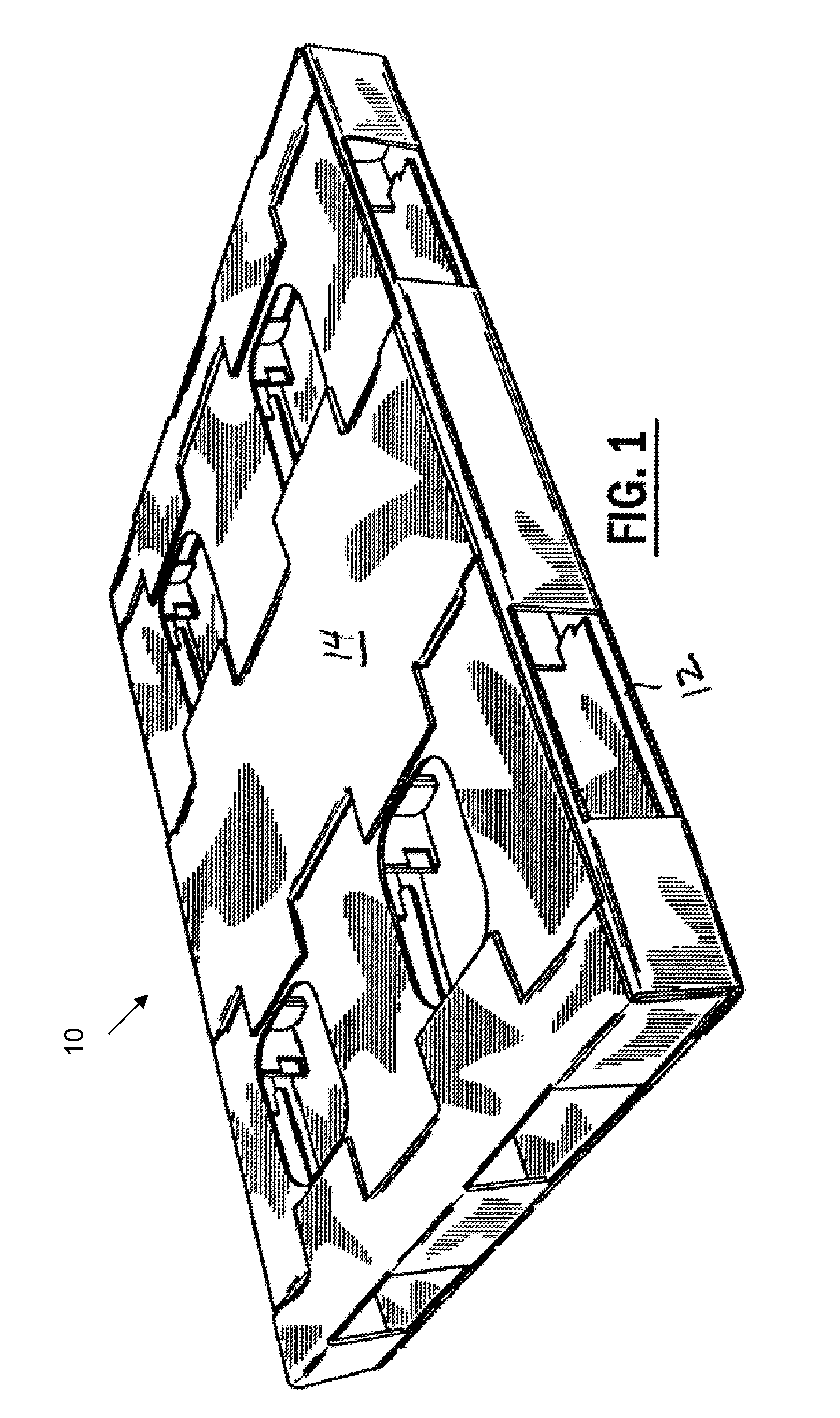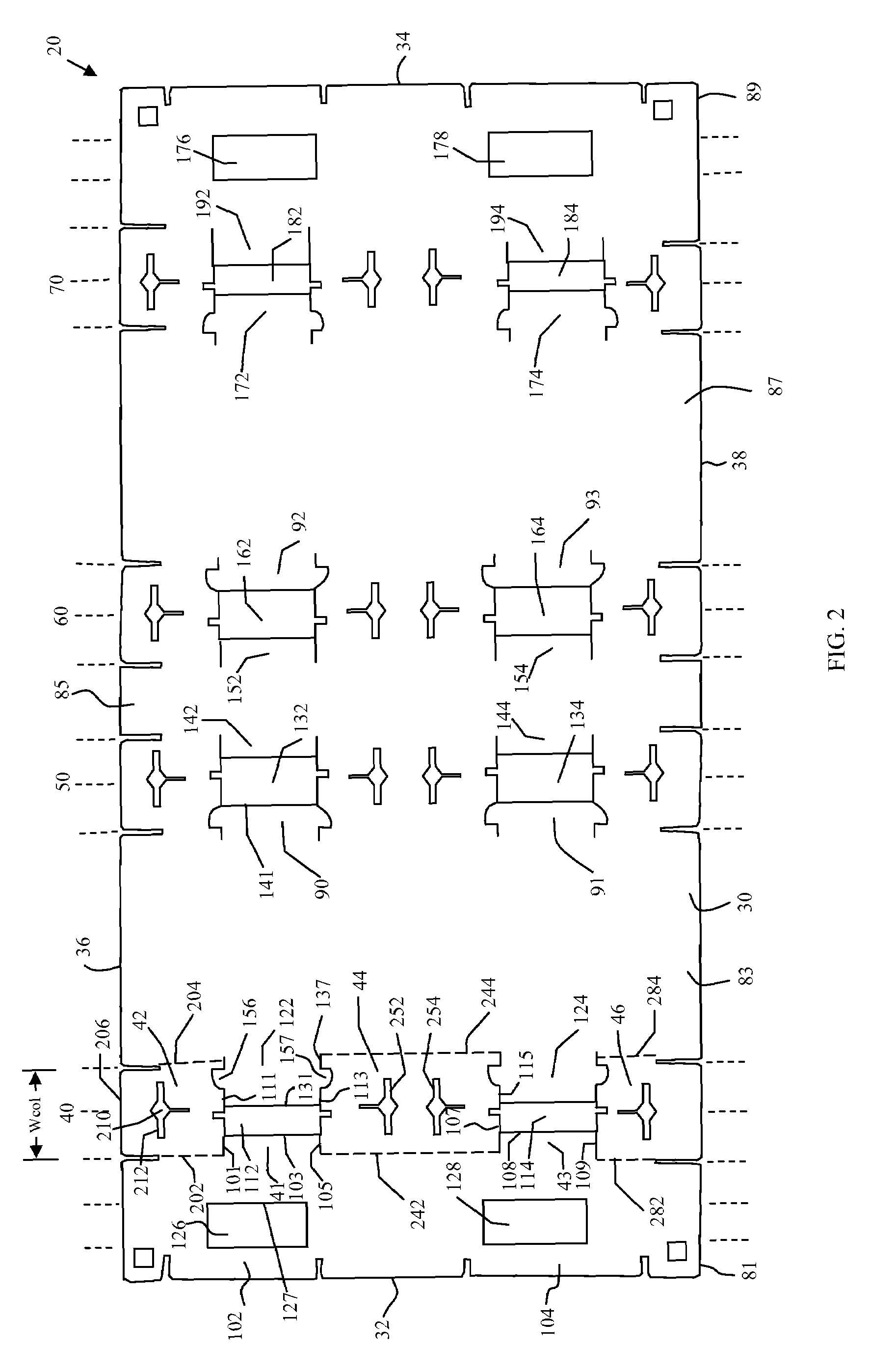Force-resisting support assembly
a technology of supporting assembly and force, which is applied in the direction of machine supports, furniture parts, other domestic articles, etc., can solve the problems of inability to provide lightweight plastic pallets, adhesives such as glues, and difficulty in properly adhesion to treated corrugated materials, etc., to achieve the effect of simplifying the production of blanks and folding steps
- Summary
- Abstract
- Description
- Claims
- Application Information
AI Technical Summary
Benefits of technology
Problems solved by technology
Method used
Image
Examples
embodiment 600
[0105]In some instances, it is desirable to have a pallet that possesses an even flat top or bottom surface. FIG. 16 shows a diagram of a flat attachment embodiment 600 that may be attached to the top of an assembled pallet. The flat attachment 600 is locked into place by tab locks 601, 602, 603, 604, 605 which are locked into holes defined in the assembled pallet.
embodiment 700
[0106]For some applications, it is desirable to have a more flat surface as well as a means to hold items onto the pallet. FIG. 17 shows a diagram of a tray attachment embodiment 700 that may be attached to the top of pallet as described herein. As with the flat attachment 600, tray attachment comprises tab locks 701, 702, 703, 704, 705, 706 to secure the attachment into place. Furthermore, the tray attachment comprises tray side walls 707, 708, 709, 710 which may be folded and secured to center panel 711. Looking to side wall 707 for example, it comprises an edge portion 712, medial portion 713. The edge portion comprises secure tabs 714, 715. Upon assembly, the edge portion 712 folds over medial portion and tabs 714, 715 lock into slits 716, 717 of center panel 711. The wing flaps 718, 719 will fold under side walls 708, 709, respectively. Sidewalls 708, 709, 710 are folded, similarly.
[0107]Further, those skilled in the art will appreciate that several different types of attachmen...
PUM
 Login to View More
Login to View More Abstract
Description
Claims
Application Information
 Login to View More
Login to View More - R&D
- Intellectual Property
- Life Sciences
- Materials
- Tech Scout
- Unparalleled Data Quality
- Higher Quality Content
- 60% Fewer Hallucinations
Browse by: Latest US Patents, China's latest patents, Technical Efficacy Thesaurus, Application Domain, Technology Topic, Popular Technical Reports.
© 2025 PatSnap. All rights reserved.Legal|Privacy policy|Modern Slavery Act Transparency Statement|Sitemap|About US| Contact US: help@patsnap.com



